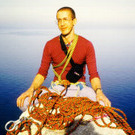BEOON advice please - functional checks prior to purchase
-
Recently Browsing 0 members
- No registered users viewing this page.
-
Similar Content
-
- 42 replies
- 10,952 views
-
- 54 replies
- 4,305 views
-
BEOON - enlarger lenses to avoid / recommended (Open thread - please add your experience for benefit of others) 1 2 3 4 7
By Steve Ricoh,
- 130 replies
- 17,779 views
-
- 198 replies
- 20,568 views
-
- 51 replies
- 16,726 views
-




Recommended Posts
Join the conversation
You can post now and register later. If you have an account, sign in now to post with your account.
Note: Your post will require moderator approval before it will be visible.